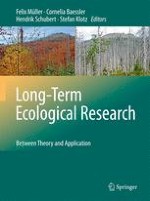2010 | OriginalPaper | Buchkapitel
12. Long-Term Investigations in Brackish Ecosystems
verfasst von : Hendrik Schubert, Norbert Wasmund, Kevin G. Sellner
Erschienen in: Long-Term Ecological Research
Verlag: Springer Netherlands
Aktivieren Sie unsere intelligente Suche, um passende Fachinhalte oder Patente zu finden.
Wählen Sie Textabschnitte aus um mit Künstlicher Intelligenz passenden Patente zu finden. powered by
Markieren Sie Textabschnitte, um KI-gestützt weitere passende Inhalte zu finden. powered by
